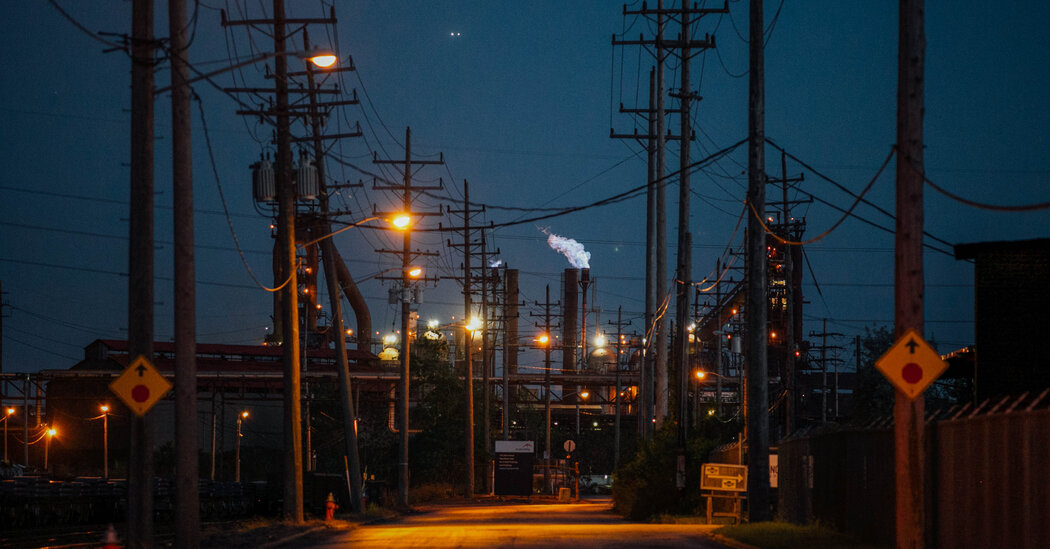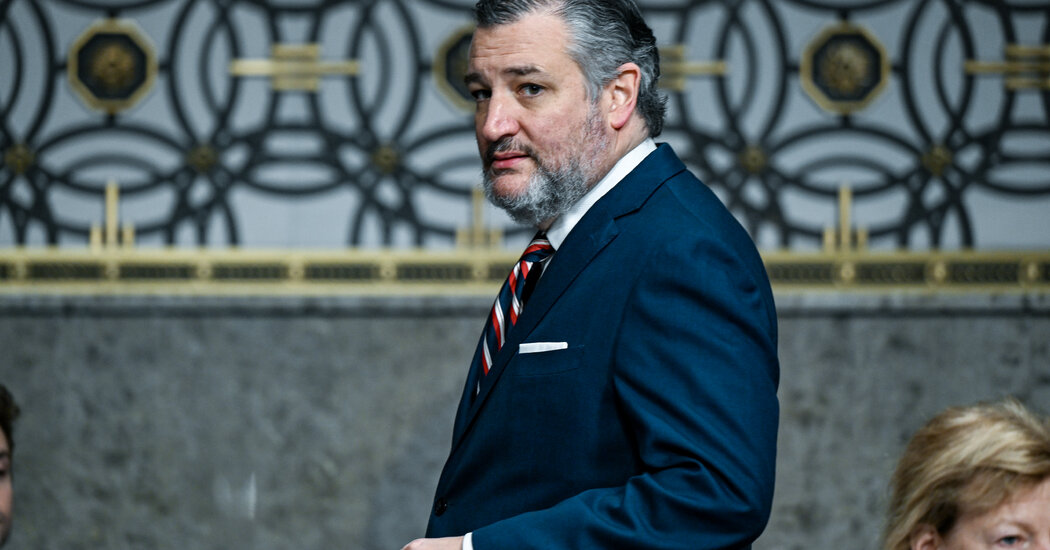
Trump Tariffs Aim to Revive U.S. Manufacturing. Is That Possible?
President Trump’s imposition of tariffs on a scale unseen in nearly a century is more than a shot across the bow at U.S. trading partners. If kept in place, the import taxes will also launch an economic project of defiant nostalgia: an attempt to reclaim America’s place as a dominant manufacturing power.
In the postwar heyday of American manufacturing, which endured into the 1970s, nearly 20 million people once made their living from manufacturing. The United States was a leading producer of motor vehicles, aircraft and steel, and manufacturing accounted for more than a quarter of total employment.
By the end of last year, after a fundamental reordering of the world economy, manufacturing employed about 8 percent of the nation’s workers.
Now, the country is wealthier than ever. Yet the economy looks, and feels, quite different — dominated by service work of all types, both lucrative and low-wage. Industrial hubs in the American interior have often withered, leaving many strongholds of Mr. Trump’s base on the economic fringes.
Protectionist industrial policies, of varying methods and attitudes, have been on the rise for a decade — from the time Mr. Trump began his first campaign for president in 2015 through the presidency of Joseph R. Biden Jr. and now with Mr. Trump in the Oval Office again.
But the president’s announcement, at a flag-draped Rose Garden ceremony on Wednesday, represented a tectonic shift in U.S. economic policy, the fullest repudiation of an embrace of global free trade that began on a bipartisan basis in the 1980s.
“With today’s action we are finally going to be able to make America great again — greater than ever before,” Mr. Trump said. “Jobs and factories will come roaring back into our country.”
A blog post last month on the White House website declared the president was positioning the United States as a “Global Superpower in Manufacturing,” and claimed credit for a slew of recent U.S. investment announcements by companies including Nvidia, the global leader in advanced computer chips, and big automakers.
An expansive cohort of economists and business leaders remain deeply skeptical of the tariff campaign, however, and of its ability to reverse the decades-long drop in manufacturing employment — a decline with various global causes and unclear domestic remedies in an age of factories dominated by robotics.
While disagreement about Mr. Trump’s prescription for America’s manufacturing decline is widespread, few experts dispute his general diagnosis — echoed by a new breed of conservatives, including Vice President JD Vance — that deindustrialization caused a sort of pain that went unnoticed for too long.
A paper published this year by M.I.T. details the impact that the surge in imported Chinese goods at the dawn of this century had in the following years. It finds that while heartland regions hit hardest by this “China Shock” have rebounded somewhat, the individual workers whose jobs were affected have not.
Since the late 1970s, a powerful stew of forces has led to the offshoring of many factory jobs. As U.S.-based multinational corporations matured, executives and activist shareholders realized that they could often increase production at lower wages overseas, enabling higher profits and reduced prices for domestic consumers.
State and federal policymakers, frustrated by testy battles with labor unions in that era of inflation, often supported such adaptations by globalizing firms.
Over the years, the relatively high value of the U.S. dollar has made goods produced by exporters generally more expensive. And the nation’s trade deficits — in which American consumers buy more things from abroad than the value of things American producers sell abroad — are also a function of affluence.
But the economic story of the American 21st century has also been shaped by the deliberate pursuit of freer trade in the hope of lower prices, with the knowledge that doing so would put U.S. manufacturing employment at risk.
“The funny thing about finance and economics is that we don’t really advance or learn anything over time, we just cycle through the same things, over and over, in different ways,” Brent Donnelly, the president of Spectra Markets, a market research firm, argues. “We vilify mercantilism and lionize free trade but are forced to rethink these religions when income inequality shatters social cohesion and decades of unreciprocated tariff cuts create an unlevel playing field.”
The Biden White House tried to remedy these socioeconomic dilemmas with a carrot-style approach to industrial policy. It sought to promote labor union empowerment across all sectors, but especially manufacturing, by backing groups like the United Automobile Workers in old industries and subsidizing new industries like green energy, with made-in-America qualifying provisions.
That approach — which will at least partly live on through the investments it spurred in the early 2020s and subsidies passed by Congress — was cut short in November. Now Mr. Trump’s style of industrial policy, based on the import tax “stick” of tariffs, is on the clock.
The push not just to preserve U.S. factory employment, but potentially to expand it, has helped Mr. Trump’s trade campaign garner some support among figures on the labor-oriented political left, like Shawn Fain, president of the U.A.W.
Abby Samp, a global industry analyst at Oxford Economics, said that “while the tariffs will likely have the effect of transferring some automotive production to existing U.S. plants, it will also raise the cost to U.S. manufacturers and households.”
Some analysts, however, are outspoken in laying out the risks in play.
The current tariff push is “an own goal,” according to Omair Sharif, founder of the research firm Inflation Insights, which tracks the precise movements of price changes across industries.
Recession odds have spiked among forecasters. And more than 40 percent of U.S. imports are inputs into domestic production, so there is also an imminent danger that much higher tariffs, if maintained, could hurt U.S. manufacturers, too.
Brad Setser, a senior fellow at the Council on Foreign Relations, argues that there was a more “moderate” way for the president to go about these trade actions. Mr. Setser, a former official at the Treasury Department and the Office of the U.S. Trade Representative in the Biden administration, generally supports a more hawkish approach to global trade.
Mr. Setser was among the officials who spearheaded early support for the whopping 100 percent tariffs on cheap Chinese electric vehicles. Their fear was that — if left to the whims of globalized capital markets — China’s BYD, the world’s largest manufacturer of E.V.s, could take a significant tranche of the American car market by storm and cause another “China shock” of sorts, which could have cost many U.S. auto workers their jobs.
But Mr. Setser says he still views tariffs as more of a targeted, defensive tool than one meant to address a chronic job loss.
“In most cases,” he argued, “the end result of tariffs is that it doesn’t solve a trade deficit, it just means you trade less, you import less, you export less, the overall deficit doesn’t typically change.”
Despite some of the tacitly acknowledged upsides of the first Trump administration’s trade wars, the U.S. trade deficit — the gap between imports and exports of goods — was as large as ever as Mr. Trump left office, and it has only grown since. Manufacturing job growth has also flatlined since 2019, despite the Biden era initiatives.
That’s partly because despite a boom in manufacturing construction, modern factories simply do not need as many workers as they used to.
Reflecting on the arc of the “Trump 2.0” tariff campaign, Arthur Wheaton, director of labor studies at Cornell University’s School of Industrial and Labor Relations, said, “It’s not completely and totally insane, but it is extremely disruptive.”
Mr. Wheaton said he did not mind the targeted use of tariffs. But he is turned off by the current Trump White House’s approach to trade negotiations — which has changed day by day, and in the case of Canada come with a threat against national sovereignty if U.S. demands are not met.
Mr. Trump’s “approach to conflict” has been “so left field you need binoculars,” he said, adding that such a volatile approach is also bad for business and for fostering manufacturing jobs.
Nick Iacovella, the executive vice president for the Coalition for a Prosperous America, a research and advocacy group representing domestic manufacturing and agricultural interests, supports a robust global “reciprocal tariff strategy” and said the White House announcement, which many thought might be a bluff, was “much better than I thought.”
Mr. Iacovella, a former Senate aide to Secretary of State Marco Rubio, worries that free-trade voices in the Republican coalition will see the tariff announcements as the starting line for “a race to the bottom” of sorts — “meaning that we’re going to prioritize other countries’ lowering their trade barriers so that we lower ours,” he said. “That is simply free trade just by another name.”
Those in Mr. Iacovella’s camp hope that Mr. Trump’s more protectionist allies prevail in ongoing debates and that higher tariffs stay in place long enough to lure factories back to the country.
“You could also invest in industrial policy, domestic production tax credits,” he said. “That could further incentivize companies to add capacity and investment in the United States.”
But what lies in store along Mr. Trump’s tariff path in the coming months remains, characteristically, in flux.










